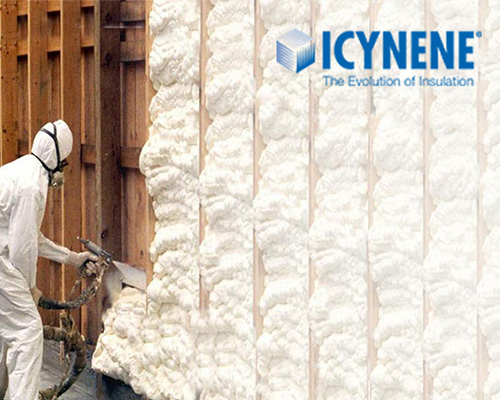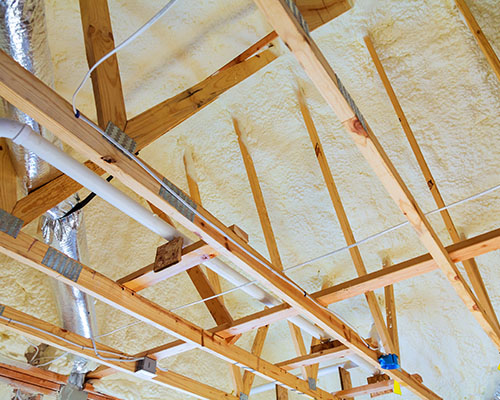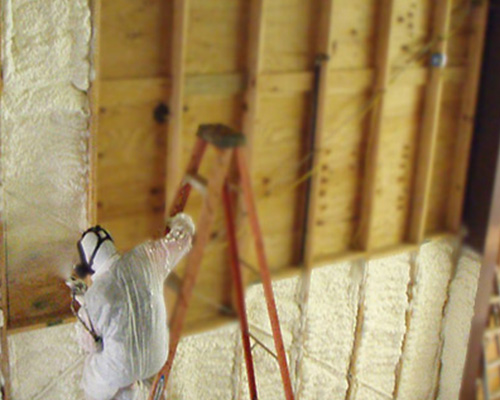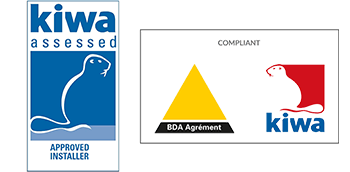We are the experts in spray foam insulation, and will be more than happy to take care of your all insulations needs. From commercial to residential insulation - no project is too big or too small for us.

Spray foam insulation is one of the most innovative, sustainable, and cost-effective insulants on the market today. It’s the latest alternative to traditional insulation types such as fibreglass, and is extremely versatile.
Spray foam insulation is capable of being applied in a multitude of areas, including the roof, ceilings, walls, loft and those tricky nooks and crannies found in every property. You’ll find that spray foam insulation can get to those hard to reach places with complete ease.
This is because spray foam insulation is sprayed into the area in a liquid form, and then transforms into a foam. Capable of expanding up to 100 times its original size, spray foam is more than equipped to insulate any space.
Spray foam insulation offers a virtually airtight seal that creates an air barrier. It’s this air barrier that sets spray foam insulation apart from other kinds of insulation, making it a cut above the rest.
If you’d like to speak to us about how spray foam insulation can help you and your property, or get a free survey, then please fill out our contact form.
Spray foam insulation is a foam that’s sprayed into a space, sealing air and providing insulation to the property, or room that it’s applied to. As a result, the structure of the building is enhanced, too.
Isocyanate and Polyole resin combine with a blowing agent to form Polyurethane, a heat activated polymer that forms an airtight barrier. There are two types of spray foam insulation; open cell foam insulation and closed cell foam insulation (see our grid below for more information on the different types of foam insulation).
Some key benefits of using spray foam insulation are: lower energy expenses, prevention of mould growth and leaks, and stronger building structure. In addition to this, spray foam insulation is better for our environment - making it the ideal choice for the environmentally friendly consumer.
Spray foam insulation takes on two main forms: open cell and closed cell. Both spray foam insulation types have several benefits. However, one may be better suited for different areas of your project than the other. Find out below which one has the specifications you need.

In addition to its thermal benefits, the air barrier that spray foam insulation creates prevents the mixing of cold and warm air within the space. As a result, the risk of condensation is reduced, thereby prolonging the lifespan of your building.
In recent years, the recommended depth of fibreglass insulation has increased to 270 mm, which means that some people are unable to insulate their lofts this way because there simply isn’t enough space between the joists.
However, spray foam insulation is versatile, and can easily be applied between the rafters, allowing homeowners to put their loft spaces to new use.
Additionally, the open cell spray foam insulation we use is 100% water-blown, with no volatile organic compounds. This makes it the perfect choice for the environmentally conscious user.
When it comes to installing spray foam insulation, it’s important to have a well-thought-out strategy. With over 20-years of experience under our belts, the team at Eco Spray-Foam Systems have perfected our installation process, meaning that you can feel confident we’ve covered every base. When you call us, this is what we’ll deliver:
Contact our team today to book a free inspection. This allows our experts to understand your needs, size up the project, and agree on the next steps. We believe in being transparent throughout the whole process, and your free survey allows us to do so.
We determine what current insulation you have in place and perform a series of tests, such as moisture and heat tests. These tests give us the information we need to make sound recommendations on how we may approach the project in question. You’ll get a full written report outlining the options.
Our comprehensive report of your current situation will include an assessment of the current conditions, and our recommendations will be accompanied by an analysis of the benefits that spray foam insulation can bring to your property.
Here we’ll put the theory into practice and start the process of installing spray foam insulation in the property. We will begin the process on a pre-agreed date, and will conduct ourselves professionally throughout. The work will be carried out by experts, and we will also notify you in advance of the timescale for the installation.
Finally, the team at Eco Spray Foam will follow up after installation to make sure you’re satisfied with the results. We want to make certain that our state-of-the-art spray foam insulation is both to your satisfaction and fulfils your expectations. Customer satisfaction is of the utmost importance to our company, and to reassure you on this point, you can see our Checkatrade ratings here.
Once our installation of the spray foam insulation is complete, you can sit back and relax knowing that your property is insulated to a high standard. You will also start to see a reduction in energy consumption, resulting in lower energy bills each month. Good news for your wallet and your carbon footprint.
Insulating your property with spray foam insulation or other modern alternatives can bring about many benefits to your life. Effective insulation is important for the following reasons:
Insulation is one of the most efficient ways to save energy. Roof heat insulation keeps your home warm in the winter and cool in the summer. It is estimated that in a year, a typical three-bedroom, semi-detached house saves up to 50% on energy bills if you install some form of loft and cavity wall spray foam insulation.
Aside from maintaining the desired temperature in your home all year round, having insulation is also useful in reducing noise pollution.
As well as reducing your carbon footprint once you’ve optimised your home’s insulation, you can heat your building more efficiently and could even create your own electricity through the application of green energy systems that pay for themselves!
Save money with foam insulation. Spray foam insulation reduces your reliance on energy to heat and cool your property. Due to its expanding and thermal properties, heat is retained much more effectively. You can save up to 50% on heating and cooling costs per month.
The indoor and outdoor air quality of your property is enhanced due to the foam insulation preventing the passing of pollutants, dust, toxins and other harmful pollutants. Keep your internal airspace healthy and breathable with our spray foam solution.
As mentioned earlier, spray foam insulation forms an air barrier on the surface where it’s applied, helping to mitigate air leakage from your building.
Air sealing your building with spray foam roof insulation will help prevent moisture ingress, effectively reduce the risk of mould and mildew growth, and help decrease the risk of ice dams and leaks during the winter.
When you compare spray foam insulation to traditional fibreglass and cellulose insulation, you will see that air infiltration is minimised, as the insulating material helps to limit moisture vapour from entering and escaping your house. These leaks account for up to 40% of the energy cost to heat or cool your house. So, when you install spray foam insulation, you reduce the pressure on your heating and cooling systems massively.
Air Seal
Mould
Moisture
As a home and residential insulation company, we aim to instil confidence and trust in our customers. Through our partnership and certification with KIWA, we meet high standards of quality and customer care.
KIWA focuses on the safeguarding of health, the provision of a sustainable, high-quality service and the assurance of customer satisfaction. Our KIWA-certified status states that Eco Spray Foam Systems is recognised by KIWA as providing the highest levels of customer satisfaction and upholding safety provisions throughout our insulation work.

Our specialists have been delivering premium-quality products and expert services for over two decades, and are certified users of spray foam insulation. In addition to this, we use the latest technological insulation solutions for modern-day applications.
Using the most up-to-date insulating technology on the market, coupled with our expert industry knowledge, we provide bespoke, a high quality insulation service for the entire United Kingdom.
But don’t just take our word for it - have a read of some of our raving customer reviews below. We also have a Checkatrade rating of 9.5, so you can feel confident that when you put your trust in us, we will deliver.
For enquiries about our products and services, or to get a spray foam insulation quote, you can call us directly on 0203 411 5188, or use our online contact form.
Over our 20 + years of experience, we have collected excellent reviews from thousands of clients across London, Manchester, Kent, Essex and beyond. You can see below what some of them had to say:
It’s not just spray foam insulation that we specialise in either. Our experts have been trained in a variety of traditional insulation types. Get in touch today to find out how we can help you!










